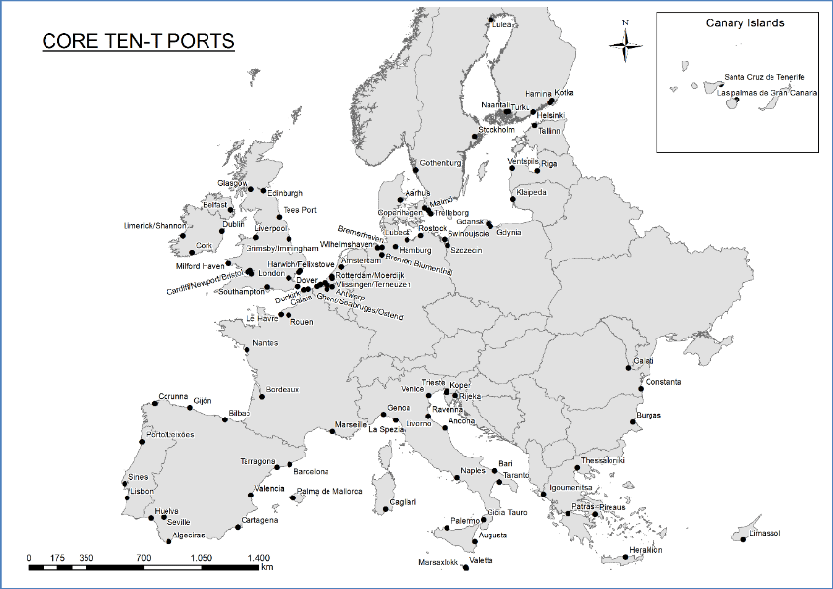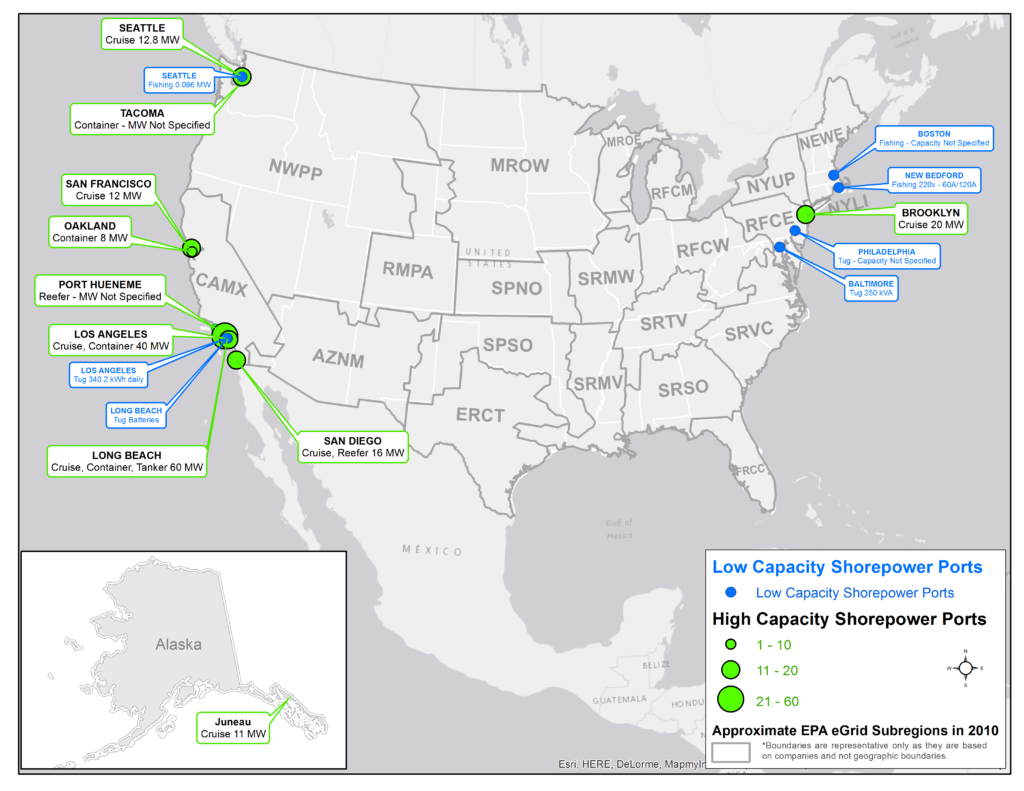There's growing regulatory pressure to build shore power for shipping, but with rapidly fluctuating electricity prices, taxes and infrastructure questions it seems to be taking a long time to emerge as a useful solution.
Electricity is a bunker fuel, well sort of. In the US, the EPA considers electricity an alternative fuel and with energy storage capacity now a common discussion within some shipping sectors (and a reality some small coastal vessels) there is increased focus on how this energy can be provided.
But here’s one problem. Liquid marine bunker fuels (heavy fuel oils, marine diesels, etc) are of course not subject to taxes. Electricity is.
Electricity is also subject to wide variations in price, even in individual countries. In Sweden for example there’s currently a huge difference between household bills in the north of the country (under 0.4kr per kWh) and the south (over 100Kr per kWh) than the south of the country.
The availability of shore side power for ships is improving. Regardless of whether you call it onshore power supply (OPS), shore power, or even the more dated cold ironing, the basis is the same – the ability of a vessel be supplied an electricity supply for its hotel and commercial use, allowing it to switch off generators and engines, thus reducing emissions while it is alongside at a terminal or port.
The main reason for this improvement in Europe is regulatory. Regardless of what many ports write in their press releases about sustainability goals, the EU has mandated through a specific directive that shore side power should be made available for shipping by 2025 in many ports.
“Member States shall ensure that the need for shore-side electricity supply for inland waterway vessels and seagoing ships in maritime and inland ports is assessed in their national policy frameworks. Such shore-side electricity supply shall be installed as a priority in ports of the TEN-T Core Network, and in other ports, by 31 December 2025, unless there is no demand and the costs are disproportionate to the benefits, including environmental benefits.”
The directive on making ports install shore power supply for vessels at berth does not make ship operators use that supply. Vessels need to have a system installed to be able to switch their electricity supply from their own generators to a cable and need to have an agreement with a supplier.
ON June 2nd The Council of ministers adopted a common position on three of the Fit for 55 packages. The position included comments on shore electricity deployment in the EU including in remote islands and territories.
Ferries, cruise ships, containerships
The indications are that a growing number of vessels are actually having the systems installed to do so, notably ferries, ro-pax and ro-ro vessels.
Yara Marine Technology announced earlier in the year that it will equip four Stena Lines ferries with shore power connections (Stena Livia, Stena Flavia, Stena Baltica and Stena Scandica). Yara is also installing its systems on three Finnlines vessels.

These vessels will be using shore power to replace generators when in port. This is f course not the same as taking an electricity supply to recharge batteries (what one can be seen as being a form of bunkering).
From a pure sustainability perspective for a company to announce that a vessel’s emissions are being reduced, it would need to ensure the electricity supplied to the vessel is from green/renewable sources.
Both Finnlines and Stena have been installing lithium-ion batteries onto vessels to create a hybrid possibility (with vessels being charged where possible while at sea as well as from shore).

Some port developments
In 2019 a consortium was launched with the French ports of Toulon, Marseilles and Nice to reduce in port emissions form visiting vessels, within developments this year including an MOU with ABB for installation of port technology. The EU is funding 25% of the total €30m budget.
The port of Bilbao says it is also getting finding cash from the EU to electrify its terminals, in this case €14m to install 14 shore power connections on it cruise, ferry and container terminals. It will also have photovoltaic cells to complement the existing 20MW wind farm the port already has to ensure some of the electricity is renewable/green.
In June 2021 Antwerp, Bremen, Hamburg, Haropa and Rotterdam said they were “committed maximise deployment of OPS for larger container segment by 2028”.
There is also the EALING project (EU funded in 16 ports) and the now closed Power@berth project in Spain.
The Norwegian port of Christiansand has power available on at least four places, with one situalted directly in front of visiting cruise ships
and in the USA. A calculator
 Not a lot of shore power is being offered in the USA overall other than in a few isolated spots. California has its own mandate n vessels using shore power when at key terminals.
Not a lot of shore power is being offered in the USA overall other than in a few isolated spots. California has its own mandate n vessels using shore power when at key terminals.
The US Environmental Protection Agency issued an assessment of power technology in US ports recently. The report illustrates that for larger vessels (excluding tugs and fishing vessels) there are only 10 ports offering high voltage power: 7 ports/terminals with shore power for cruise ships, four offering electricity for container vessels and two offering power for either tankers or reefers.
But what is interesting with the report is a calculator tool to estimate how harmful air pollutants could be reduced at U.S. ports through the use of shore power systems;
The estimates can be used in conjunction with EPA’s Diesel Emissions Reduction Act (DERA) program to help evaluate potential shore power projects for grant applications, and for reporting emission reductions from grant projects.
The calculator is useful as it offers insight into the average emissions from electricity generation for the US regions, enabling like for like power generation comparison with ship diesel engines.
EOPSA
In Europe technology and energy companies like GE, Schneider Electric, Enerco and Heerema marine contractors have formed the European Onshore Power Supply Association.
Coming up to being a year old it is promoting the kind of collaboration needed to get the energy suppliers to make green electricity available in ports and harbours for ships, thus encouraging ship operators, notably ones with vessels operating on regular routes, to gain more benefits than using distillate fuels.
The challenge EOPSA faces in this is not insignificant. It needs the electricity suppliers to engage with shipowners, in a way somewhat similar to the kind of relationship operators will need with any of the alternative fuel choices that are emerging. It needs the port authorities, and even member states to create the conditions, notably in at least two of the ports/countries that a vessel will operate in (reciprocity).
EOPSA’s first event to try and facilitate further electrification in Europe will take place in mid September in France


































